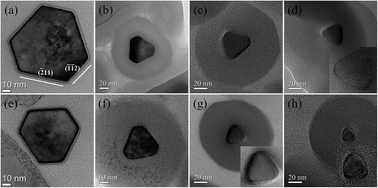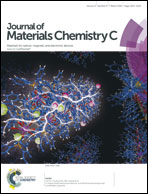Structural evolution and carrier scattering of Si nanowires as a function of oxidation time†
Abstract
We investigated the morphological characteristics of the cross-sectional shape of Si-core nanowires (NWs) as a function of oxidation time. In the case of as-grown Si NWs, the Si cores were hexagons with a 3-fold symmetry, not a 6-fold symmetry, and this shape was transformed into a triangular shape with rounded edges after thermal oxidation. Structural changes in the cross-section of the Si-core NWs were related to the surface free energy. Moreover, the morphological change in the oxide shell during the oxidation treatment suggested that the stress relaxation process is closely related to the structural evolution of the Si core. The change in defect states generated in Si/SiO2 core/shell NWs during structural evolution was investigated by low-temperature photoluminescence and optical pump–THz probe spectroscopy measurements. In particular, surface defect states formed in the interfacial region between the Si core and the oxide shell were reduced during the oxidation process. Appropriate control of the surface state affected carrier scattering: the relaxation time of photogenerated carriers was significantly increased due to the reduction in surface defects.


 Please wait while we load your content...
Please wait while we load your content...